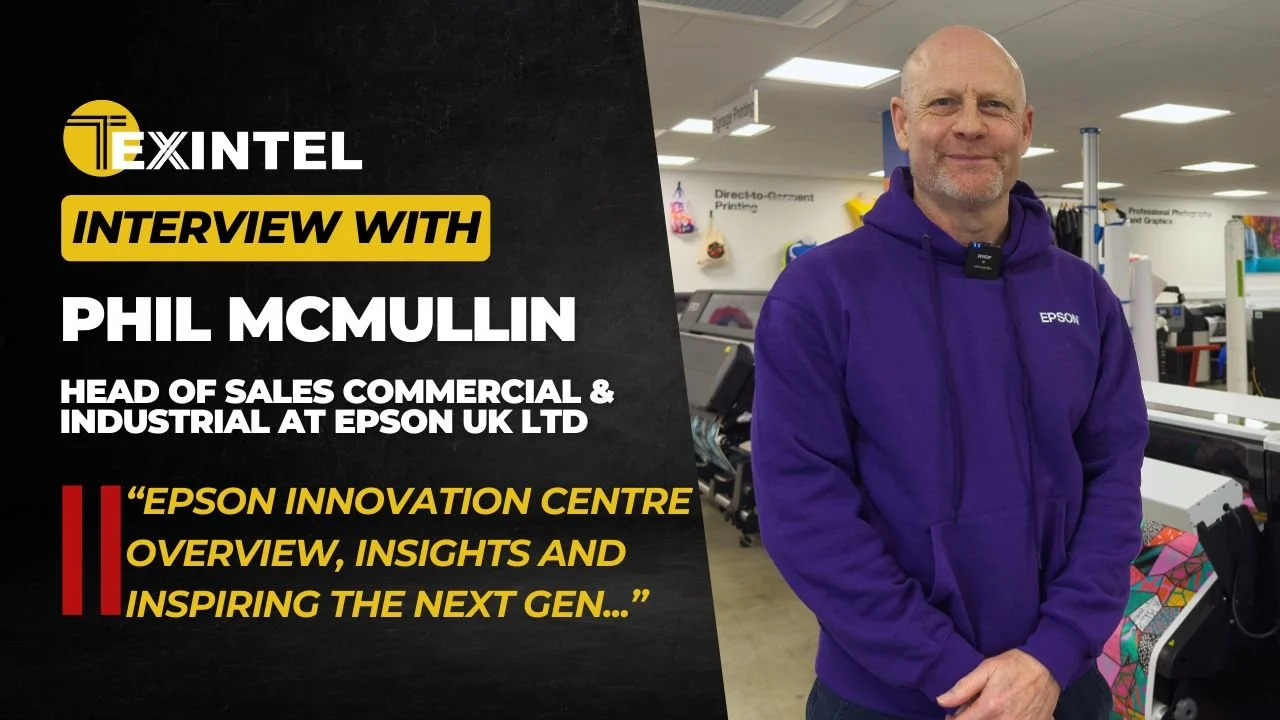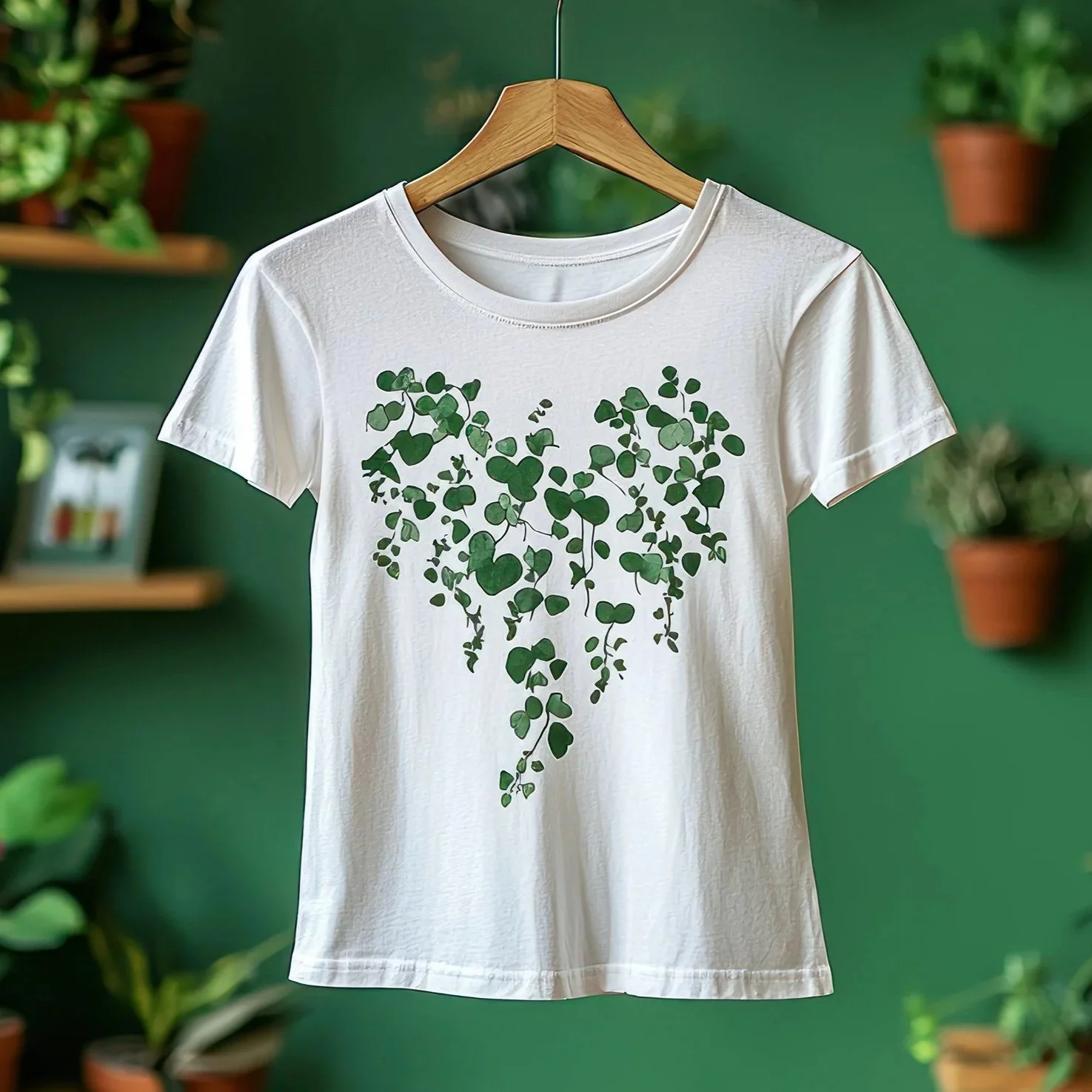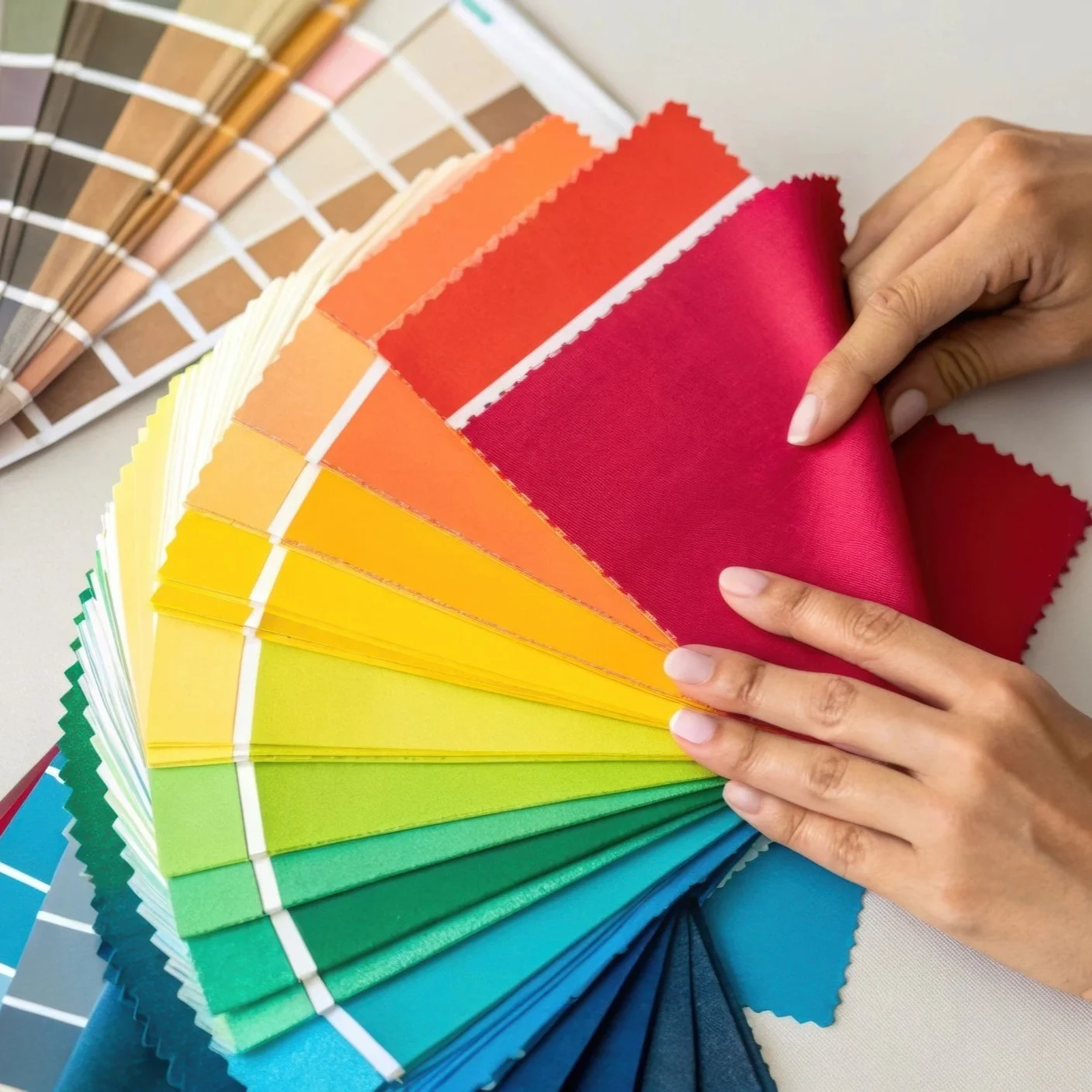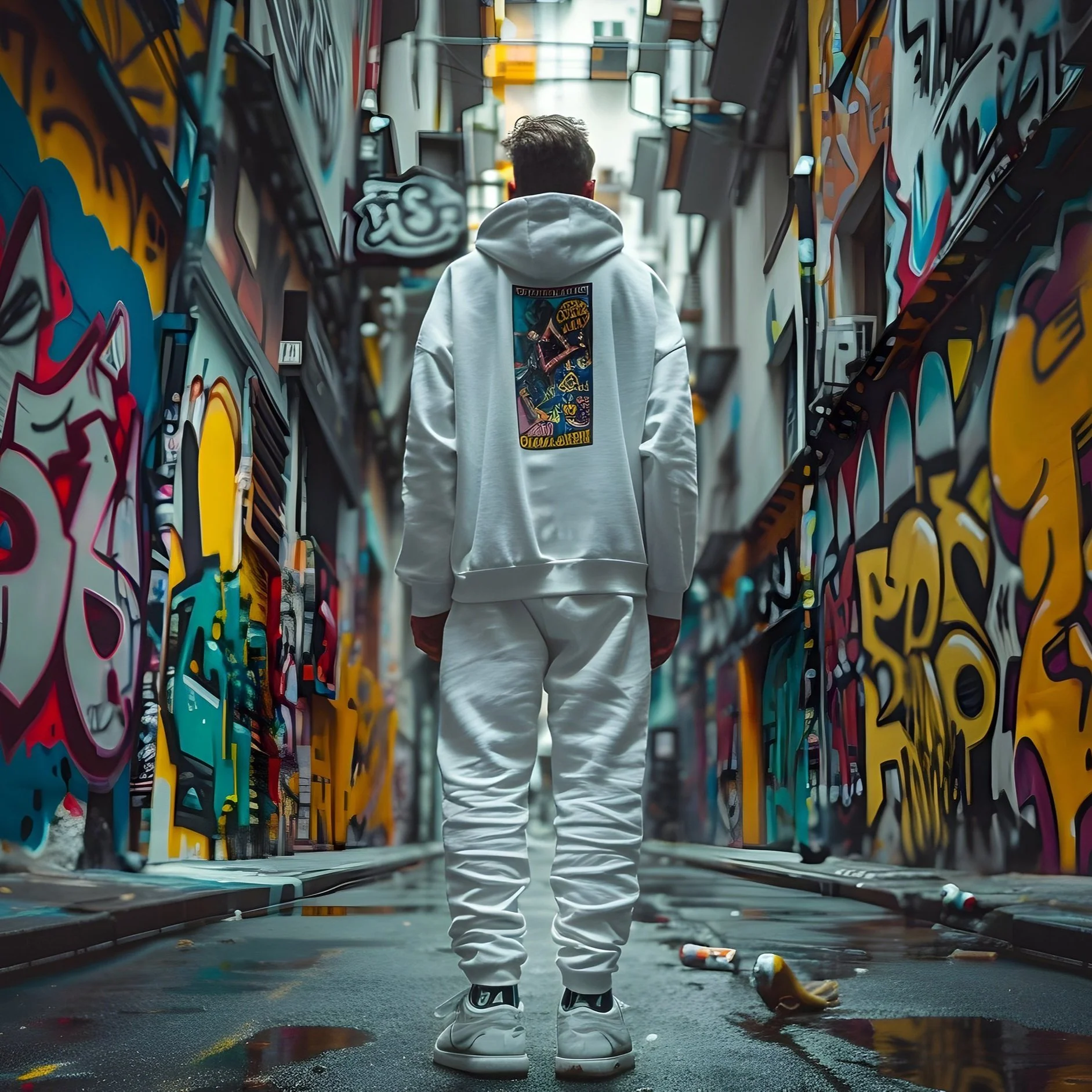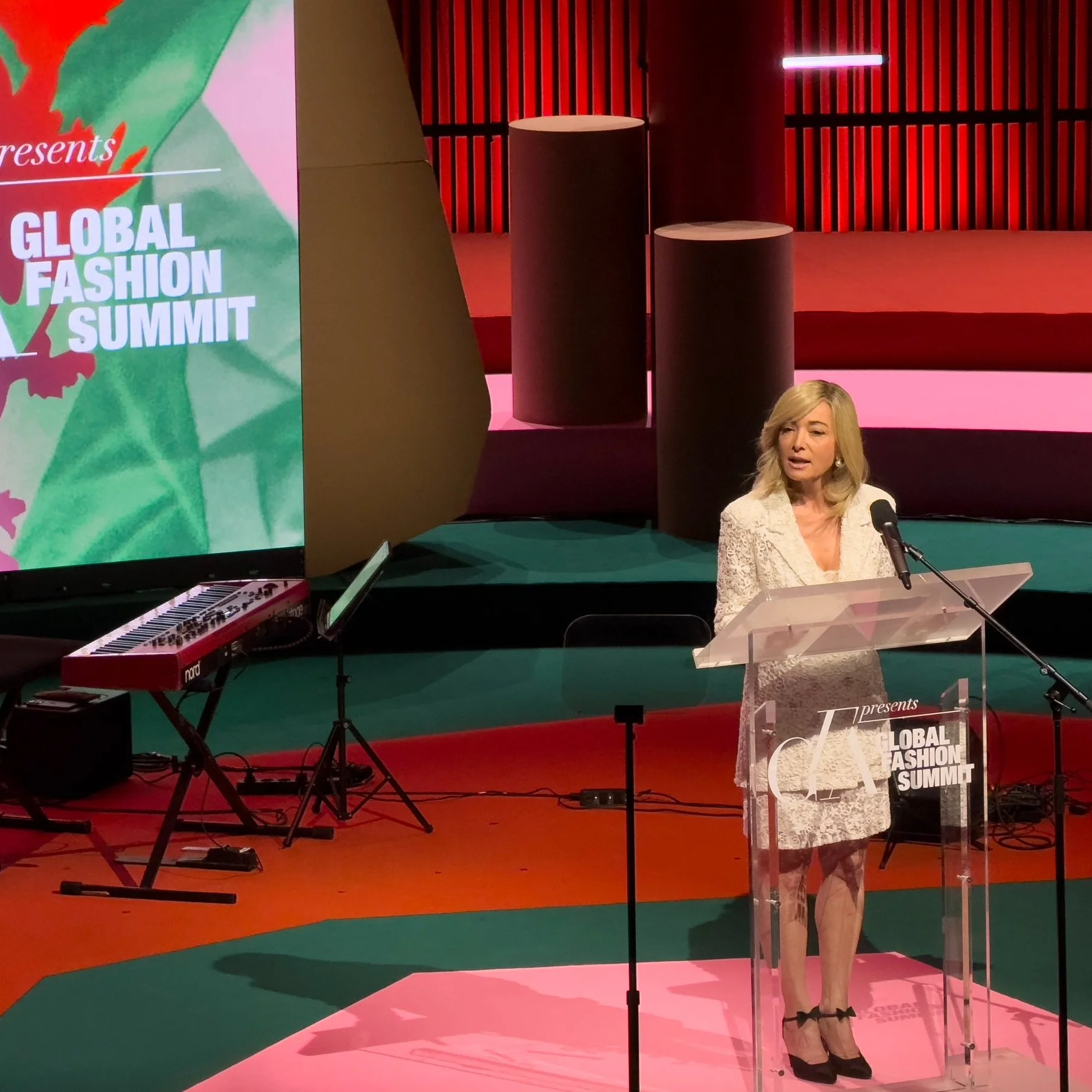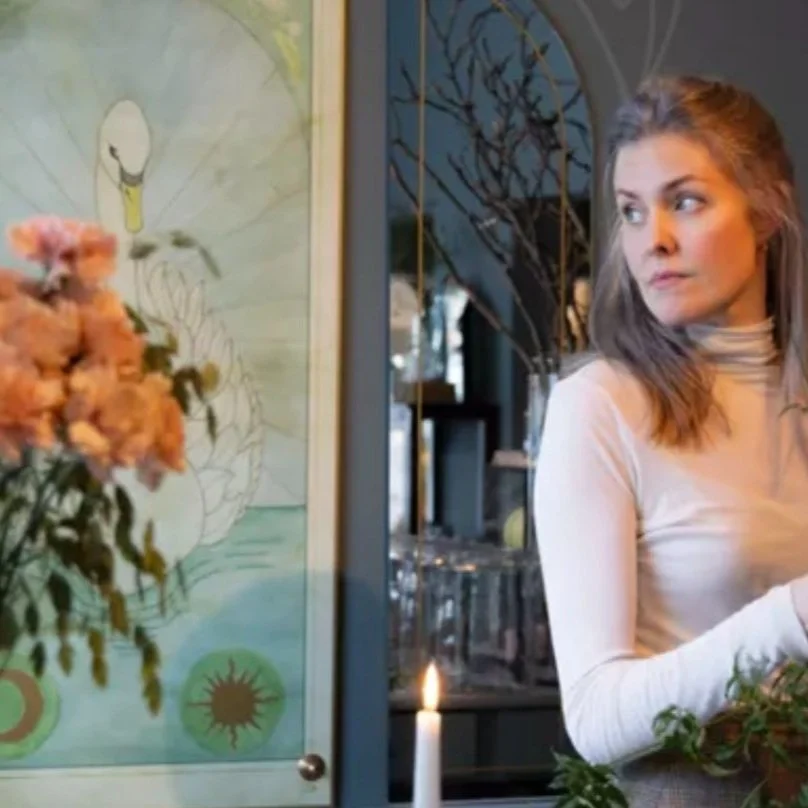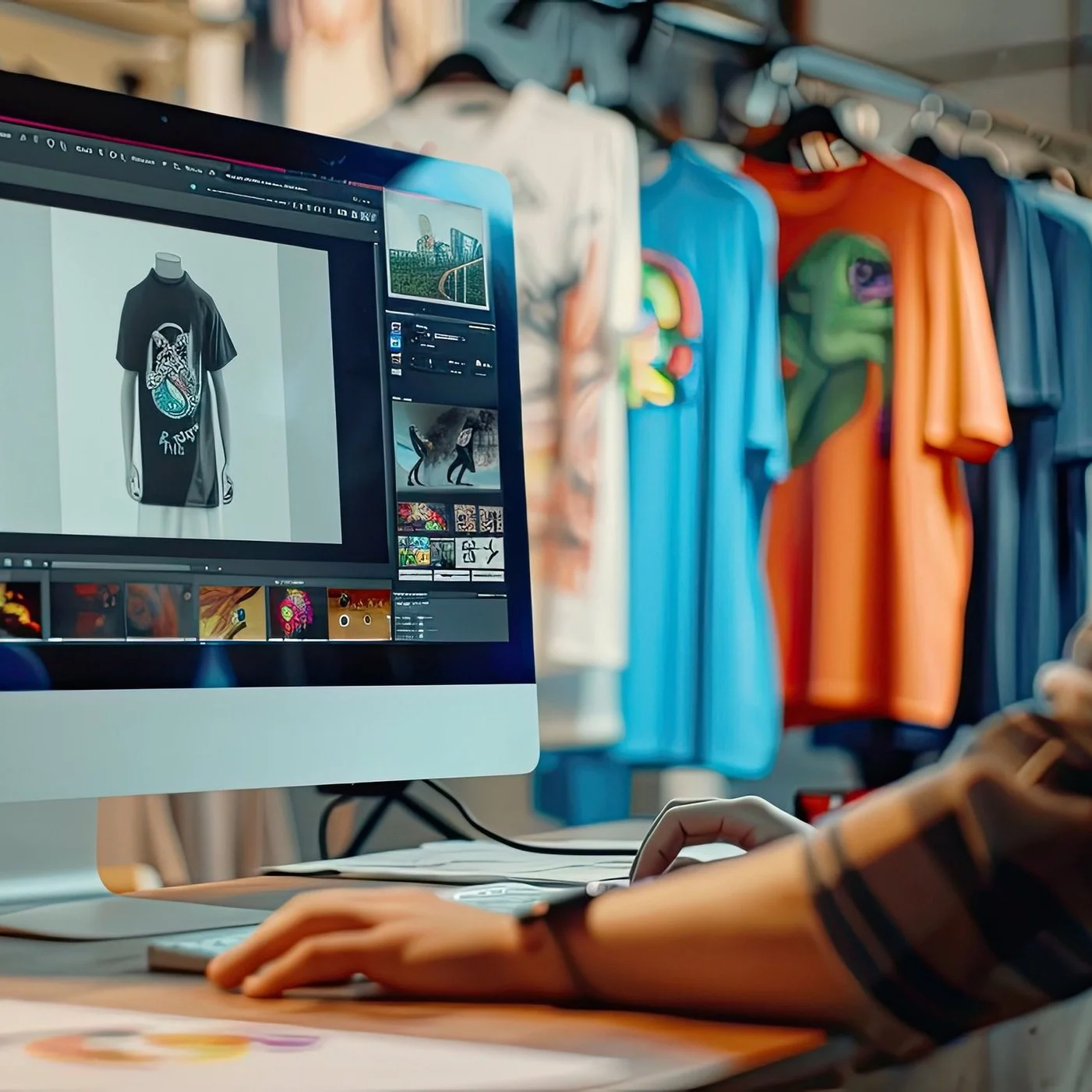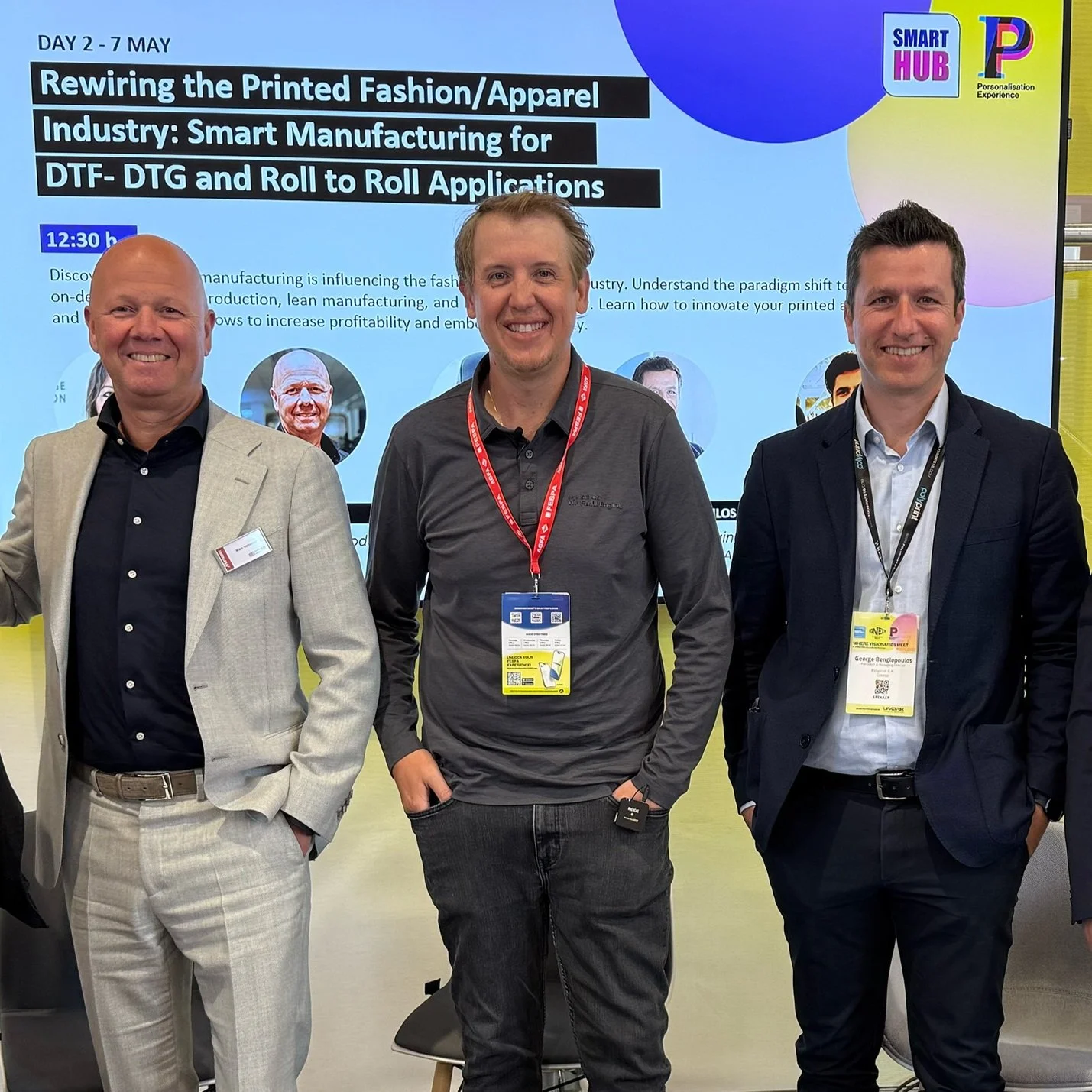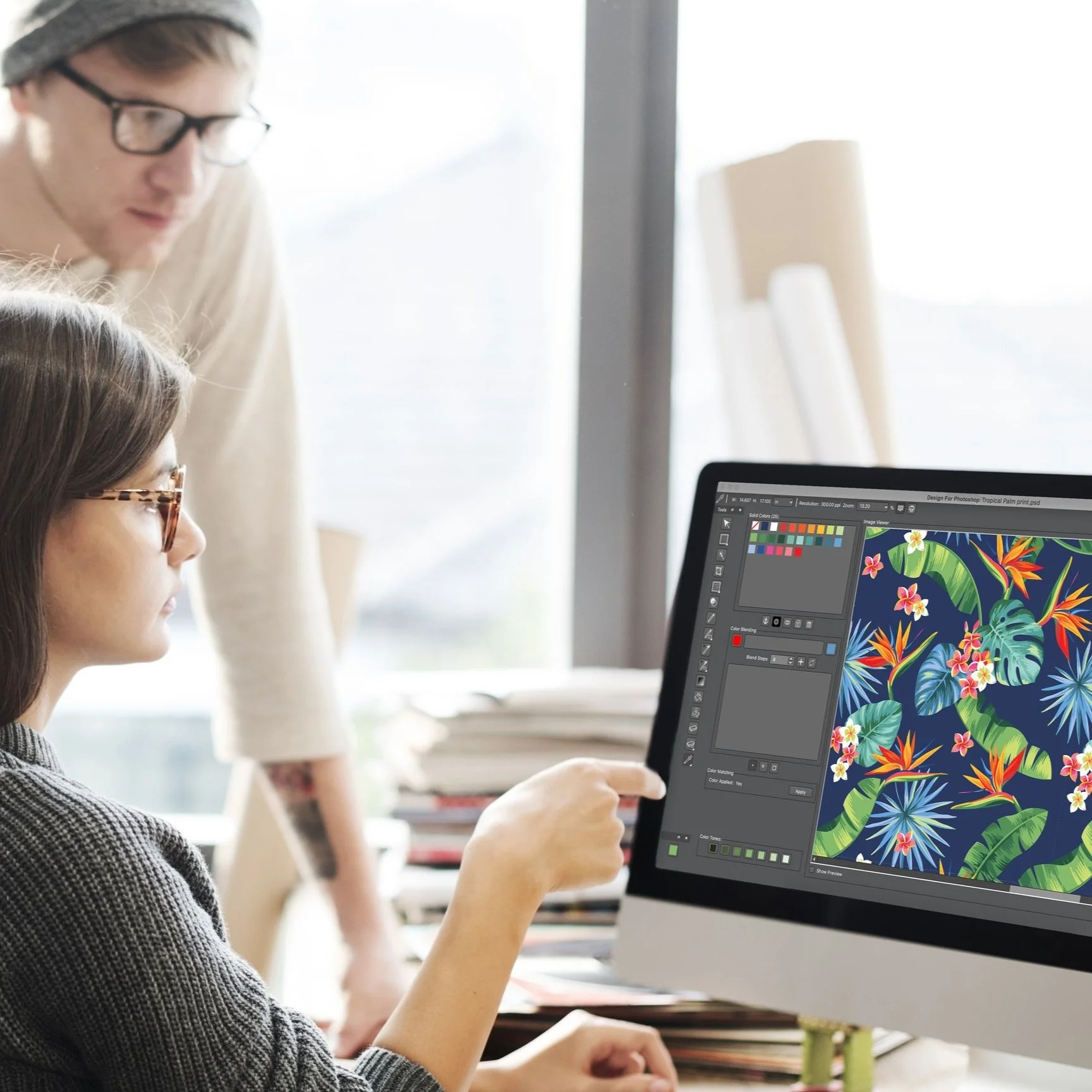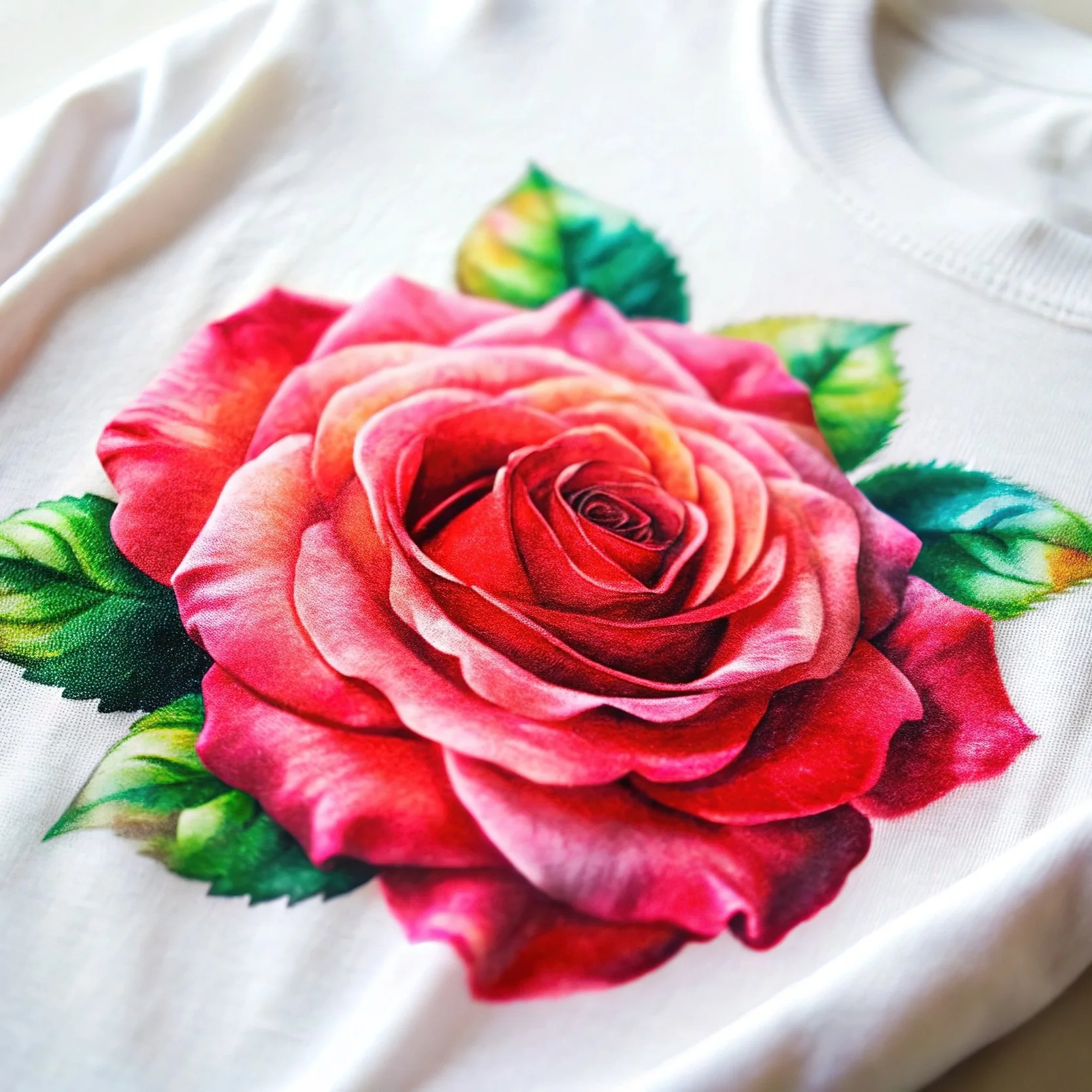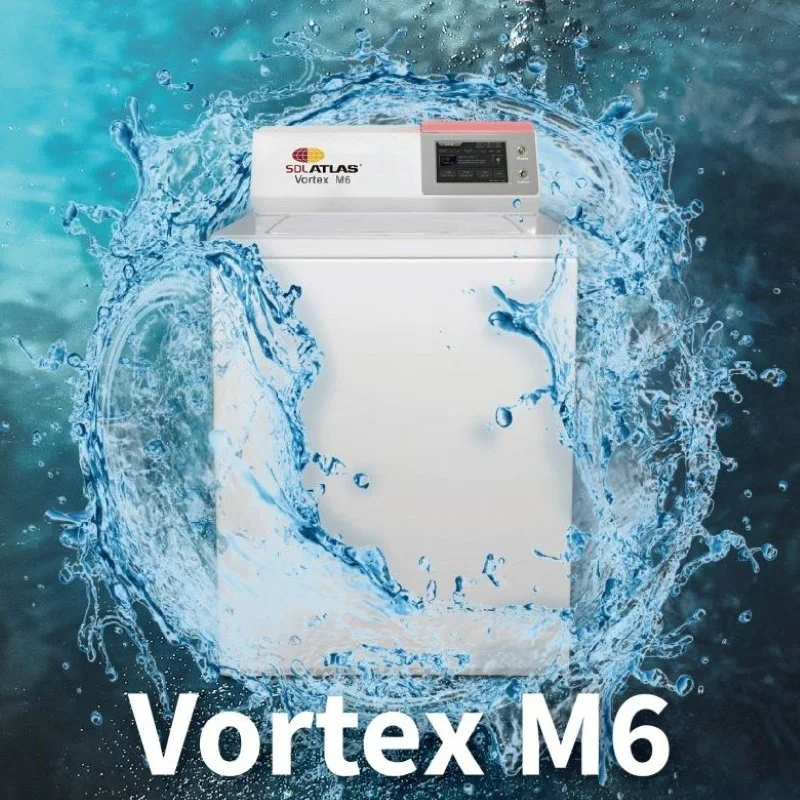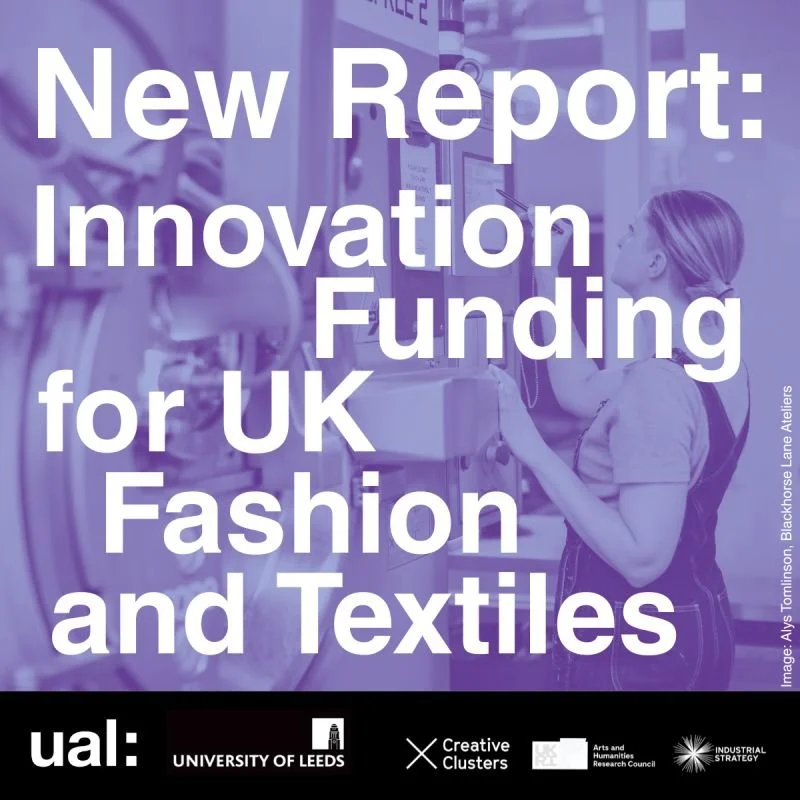TEXINTEL LIVE - SERIES 1 - INTERVIEW WITH ADRIAN BURTON - SEWORKWEAR AND CORELDRAW
SEWorkwear was founded over 30 years ago and remains a family run business.
Over the years much has changed and design software is now a fundamental tool for the business.
As the workwear industry becomes increasingly customized the business has strengthened its retail and online operations using software from CorelDraw.
In this video interview with the companies director Adrian Burton we discuss designing for apparel, where products are printed and embroidered, and how software has enabled growth and a streamlined efficient workflow.
In this video we discover how SEWorkwear has utilised software from CorelDraw for their ongoing success:
KEY QUESTIONS FOR DISCUSSION:
• When did you first start working with CorelDRAW Graphics Suite?
• How has your digital workflow changed over the years?
• How do you utilise CorelDRAW in Design origination?
• What’s the most important factor for an efficient pre-press design flow?
• Do you use the bespoke workspace function to simplify repetitive tasks?
• Working remotely – how important is design visibility between the customer and production and how do you address this?
• How do you control colour management using CorelDRAW?
• What’s the most commonly used file format and why do you prefer?
• Transparency is increasingly important – What information do you embed in your production files?
• How has CorelDRAW helped your business grow?
Watch to learn more >>
In this conversation, Debbie McKeegan, Brooke Roberts-Islam, and Anja Sadock discuss the critical topic of compliance in the fashion industry - focusing on the increasing number of regulations and the importance of data management in ensuring compliance.
They explore the challenges faced by smaller businesses in navigating these regulations and highlight the opportunities that arise from embracing compliance as a positive step forward.
The discussion emphasises the need for a structured approach to data collection and the importance of mapping supply chains to improve transparency and accountability.
Watch to learn more >>
In this conversation, industry experts from NedGraphics, Epson, and Adobe discuss the evolving landscape of the textile industry, focusing on the integration of technology in the printed supply chain.
Diving Deep into the production workflow, they explore the challenges designers face in an increasingly digital manufacturing eco-system.
The discussion highlights the role of software and automation in simplifying workflows, and the significance of embedding trust using technology. As the industry moves towards sustainable production, experts emphasise the potential for innovation and the importance of adapting and integrating new technologies.
Watch to learn more >>
Innovations and Sustainability in Textile Printing: A Deep Dive into Epson’s Monna Lisa Series with Duncan Ferguson
Join Debbie McKeegan, CEO of Texintel, as she interviews Duncan Ferguson of Epson to explore the latest innovations in the Monna Lisa textile printing series. This insightful conversation delves into advancements in digital printing technology, sustainability initiatives, and the future of compliance and transparency in the textile industry.
Watch to learn more >>
Mark Lewiecki, Senior Product Manager for Adobe's PDF Print Engine, discusses the release of version 7, which aims to streamline pre-press workflows by integrating more functions into the RIP, addressing the growing skills gap.
The new features include native consumption of Photoshop and Illustrator files, eliminating the need for manual conversions, which is particularly beneficial for the textile industry. This technology, embedded in leading OEM partners' solutions, enhances productivity and profitability by reducing errors and delays.
Adobe's consistent technology across the Creative Cloud ensures reliability and consistency throughout the workflow.
Watch to learn more >>
Debbie McKeegan interviews Matthew Faulkner of Canon about the innovative use of their Arizona and Colorado printers to refurbish a florist store in Oslo, Norway.
The project, a collaboration between Fiori and PS Press, involved transforming the store with printed surfaces, including wallpaper, mirrors, and a champagne cork ceiling - plus wrapping paper, and branding. All printed using Canon technology: UV gel for roll-to-roll printing and UV flatbed applications. The Fiori / Canon project utilised state-of-the-art technology to enhance the store's ambience and create a unique brand identity and demonstrated the durability and adaptability of printed materials, aligning with sustainability trends. The project won a Bronze medal in the Printeriors Awards 2025. Watch to learn more >>
Focussing of industrial scale technology for DTG (Direct to Garment) printing, Danny Gazit from Kornit Digital discusses their Apollo technology, a groundbreaking digital printing system addressing critical challenges in the screen printing industry.
In conversation Danny emphasises the system's potential to revolutionise screen printing by addressing current industry pain points through innovative digital technology.
Debbie McKeegan interviews Duncan Ferguson from Epson at FESPA, focusing on new smart technologies and innovations. Epson introduces the SureColor G6000, their first direct-to-film printer, offering roll-to-roll printing with bespoke Epson technology and a warranty. The printer aims to simplify the transition for customers familiar with Epson's products. Epson also highlights their spectrophotometer in the SD-10 for color management, accessible via a phone app. The SureColor F9500 dye-sublimation printer offers three six-color combinations, enhancing color options for various industries. Epson's dual ink system ensures continuous printing without downtime. The company emphasises customer feedback and continuous innovation to meet industry needs.
In this conversation, Debbie McKeegan and Mike Scrutton discuss the latest innovations in textile printing, focusing on Adobe's PDF Print Engine 7 and its impact on the Textile industry. They explore the challenges of colour management, the importance of automation, and the shift towards personalisation and on-demand manufacturing. The discussion highlights the need for efficient processes and the role of visualisation in meeting customer expectations, as well as the exciting future of digital printing technologies.
The Early.Vision system, called Match AI, allows users to upload an image of a garment they like, which is then converted into a print-ready design. Users can choose between all-over printing or tiled patterns. The software integrates with e-commerce and ERP systems, automating order management and nesting for efficient production. It handles different products and materials and prepares nested sheets for multiple orders, ensuring high efficiency and minimising manual intervention. The goal is to streamline the production process, making it fully automated from order to delivery.
We interview Dimple Patel - Chief Product Officer and Head of Global Marketing at Sawgrass Technologies.
Key Takeaways:
VersiFlex is a versatile printing solution that allows users to decorate multiple substrates (t-shirts, mugs, hard surfaces) with a single system and minimal investment.
The system supports three media types: sublimation paper, sublimation vinyl, and a patented VersiFlex light media with self-weeding technology. Users can print on various fabrics and materials, including polyester, cotton, organza, chiffon, and suede, without pre-coating.
The ink set includes a special expander that enables soft weeding and deep, RGB-based black printing across different colours and surfaces.
VersiFlex democratises printing technology, making it accessible to entrepreneurs, home crafter
Guy Yaniv discusses the Kornit Digital Apollo. A transformative digital printing solution that goes beyond traditional printing equipment, offering the Apparel garment decorator a game-changing technology for industrial production on-demand.
The Apollo delivers an agile, efficient and adaptive digital technology with the power to disrupt the Apparel screen printing industry.
In this interview Guy discusses: Market Potential, Innovation, Business transformation and Data Driven Insights.
Duncan Ferguson of Epson discussed the purpose of Epson's new innovation center in the Midlands, which focuses on demonstrating, testing, and training in digital printing technology. He emphasised the importance of involving the younger generation in the industry, as they understand digital technology better and can help revitalise the industry with new ideas and skills. Ferguson highlighted that digital printing, especially in textiles, is growing rapidly, and the industry needs to reshore production to Europe to improve sustainability. He also noted that over 90% of textile printing in the Como region of Italy is now digital, underscoring the shift towards digital technology in the printing industry.
Charlie de la Haye, Communications Manager at Epson, discusses the launch of Epson's new innovation center in Lutterworth, aimed at showcasing the benefits of print technology in the textile industry. The initiative also focuses on future-proofing the textile industry by educating and inspiring students about sustainable printing practices. De la Haye emphasised the importance of adopting environmentally friendly technologies and circular design to reduce the fashion industry's environmental impact. The event, attended by 21 Nottingham Trent University students, highlighted the need for quality and circularity in business practices to ensure long-term sustainability and stakeholder trust.
Debbie McKeegan hosts an insightful interview at the Epson Innovation Centre, where a final-year textile design student from Nottingham Trent University explores the intersection of creativity, print and sustainability.
Meet Iona, a final-year textile design student from Nottingham Trent University, who's passionate about revolutionising the industry with her specialisation in print. Join us as we explore her journey, insights into sustainable practices.
Discover how the next generation is shaping the future of fashion and textile design, and hear firsthand how Iona's experience at the Epson Innovation Centre is paving her path forward. Whether you're a seasoned professional or a curious newcomer, this interview is a must-watch for anyone interested in the evolving landscape of design and sustainability. Listen to learn more >>
Debbie McKeegan hosts a roundtable discussion with Guy Alroy of Early.Vision, Oliver Mustoe Playfair of Prinfab and Phil McMullin of Epson UK. Their discussion explores the paradigm shift in the fashion industry from fast fashion to personalised fashion, highlighting the challenges, solutions, and benefits for the manufacturing community. Looking at all aspects of production to share their knowledge and expertise on how automation software in tandem with smart technology offers a solid solution for optimised apparel manufacture. Experts from Printfab, Epson, and Early Vision share insights on the role of technology, sustainability, and the future of apparel production. Listen to learn more >>
In conversation with Texintel CEO - Tarunpreet Rai, Corporate Sustainability Manager at Epson UK discusses the Water Silks Fashion Project. Highlighting the environmental impact of the fashion industry, particularly the use of 18,000 litres of water to make one pair of jeans, equating to 24 years of drinking water. Epson partnered with Green Story and Patternity to create four silk scarves, each representing a European waterway using Epson's Monna Lisa digital print technology to reduce water consumption by 96%.
At the Heimtextil event in Frankfurt, 2025, Debbie McKeegan interviews Frank Maeder, President of NedGraphics and Optitex and discusses the importance of creativity, productivity, and sustainability in the home textile industry, particularly in interior decor and furnishings. They highlight the integration of artisan techniques with modern technology, emphasising the role of technology in enabling creatives to work efficiently. The conversation also touches on the significance of colour management, noting a trend towards neutral tones and the challenges in accurately reproducing these shades. The speakers agree that technology should alleviate industry pain points, allowing creatives to focus on their craft without technical hurdles.
At the Heimtextil event in Frankfurt, 2025, Debbie McKeegan interviews Frank Maeder, President of NedGraphics and Optitex and discusses the importance of creativity, productivity, and sustainability in the home textile industry, particularly in interior decor and furnishings. They highlight the integration of artisan techniques with modern technology, emphasising the role of technology in enabling creatives to work efficiently. The conversation also touches on the significance of colour management, noting a trend towards neutral tones and the challenges in accurately reproducing these shades. The speakers agree that technology should alleviate industry pain points, allowing creatives to focus on their craft without technical hurdles.
Richard and Rebecca Haley from Haley Studios discussed the resurgence of artisan craft and maximalism in the design industry, emphasizing the demand for textured, hand-crafted murals. They noted a shift away from flat, digital designs towards more tactile, imperfect pieces. Wallpapers, particularly murals, are a significant market for them, with a growing interest in high-profit, unique designs. They highlighted the importance of substrate variety and the evolution of digital printing to enhance design aesthetics. Haley Studios launched their own brand of murals, aiming to balance commercial viability with creative integrity, focusing on high-quality, impactful designs.
At the Heimtextil event in Frankfurt, 2025, Karlos Gordobil of AVA CAD CAM discusses the latest innovations in their software suite. Key updates include a modern, intuitive interface, AI-powered design tools, and a shift to continuous release for faster customer feedback. Now with cloud keys for flexibility and newly introduced live chat for immediate customer support. The new features aim to enhance productivity for designers and industry practitioners. AVA has been exhibiting at Heimtextil for nearly 20 years, emphasising the importance of digital tools in an industry where 90% of printing remains traditional/analog. The integration of digital and traditional printing methods is crucial for seamless production across the supply chain.
Chris Govier from Kornit Digital shares textile Industry Insights and explores their latest collaboration with Niso, a furniture manufacturer from Tel Aviv, at Heimtextil 2025. Kornit's digital ink-jet technology allows for unique xDI (extra dimensional) printing directly onto various fabrics, including both cellulose and synthetic materials, leather and textured textile surfaces - creating new - innovative applications across the interior decoration landscape of design. This collaboration showcases 3D printing on vegan leather and luxury, sustainable woven substrates. Kornit technology enables virtual design and product prototyping for on-demand production at any volume - reducing overproduction and waste, which is significant in the home decor and fashion industries.
At Heimtextil 2025, Debbie McKeegan, CEO of Texintel interviews Luca Bruson of Fotoba about their collaboration with Canon. Fotoba showcased their integration of the Colorado series and Fotoba systems, enabling on-demand manufacturing with multiple printers and a single cutting system. They demonstrated a jumbo roll system capable of holding 400 kilograms of media, with a print run of 700 to 1000 meters. The XLA cutter, which reads barcodes and positions blades automatically, ensures precise cutting with a tolerance of 0.068 millimeters. This technology, which supports both mass and bespoke production, is noted for its low electric consumption and environmental benefits.
Kateryna Basiuk from Lucerne University of Applied Sciences and Arts presented her bachelor work, "Silent Canvases," which involves creating upholstery for acoustic panels from recycled denim. The project, part of a research department initiative, uses knitting techniques inspired by acoustic camouflage in moth wings. The recycled denim yarn, sourced from properly serviced textiles, is used to weave fabrics that can be attached to acoustic panels without glue. This approach promotes circularity by integrating multiple materials into a single, easily recyclable product. Basiuk won a competition, Creative Visions: at Heimtextile 2025 for this innovative work.
This conversation explores, and explains the innovative TRAPIS transfer printing technology developed by Mimaki, focusing on its use of pigment inks and sustainable printing practices. The discussion covers the evolution of printing processes, the differences between TRAPIS and Dye Sublimation, and the importance of partnerships, and collaboration in developing this advanced technology. The potential applications and market opportunities for TRAPIS are discussed, along with environmental benefits and the future impact on the printing industry.
In this video podcast, Debbie McKeegan interviews Frank Maeder, president of NedGraphics and Optitex, discussing the evolution of textile design, the integration of technology, and the importance of sustainability. They explore how designers' roles have changed, the impact of digital tools like NedHub and their latest software release, plus the necessity of partnerships in the industry. The conversation also touches on the future of AI in design and the need for seamless workflows to enhance creativity and efficiency. Listen to learn more >>
"“GREEN GRADS is an inarguable double whammy: promoting new talent and the environment at one and the same time. Our forward-looking outward-facing sponsors publicly affirm their support of these two vital causes.” Barbara Chandler, founder/curator GREEN GRADS"
Conor has invented “seaweed leather,” a versatile, durable and sustainable biomaterial based on kelp, which is both regenerative and abundant in Scotland, where he studied and lives. Conor worked with Scottish seaweed experts and event organisers to explore and test his new material building a segment of a modular, scalable pavilion for outdoor events such as festivals. “Such temporary structures are typically made from extractive materials and generate significant waste,”
"In this conversation, Cary Sherburne of What They Think, USA interviews Michael Cherwinski, co-director and producer of Green Grads, discussing the initiative's mission to support new design talent and foster a community among graduates. Michael shares his background in ceramics and public engagement, emphasising the importance of networking and collaboration among designers. The conversation also highlights the strategies used to attract attention from journalists and investors, focusing on the strength of the products showcased by Greengrads."
Winner of the "THE EARTH AWARD 2024" Yohaan Kukreja and Ankita Khanna RAWMaterials (Renewable Agricultural Waste) “A bio-composite, which is a sustainable, circular alternative to synthetic materials, made from the rice straw otherwise burnt in huge quantities every year by farmers in India.” interviewed by Cary Sherburne of What They Think. The judges commended the passion that Yohaan and Ankita bring to their project, starting with a moving video that shows fields ablaze. They felt that RAWMaterials goes one step further than creating a material from waste; it is also a protest against deadly air pollution and soil degradation. The designers also have a credible business plan to target several industries, including footware, hotels and cars.
In this conversation, Cary Sherburne of What They Think interviews Saima Fateh - “The Transence Screen” This clever window blind is a new concept of "responsive sun-shading” which needs no electrical connections. The elegant translucent acrylic louvres panels contain a "smart" material called Nitinol, an alloy which changes shape as it gets hot, and reverts back as it cools down. Furthermore, the louvres are printed with photochromic patterns that shift from white to orange as solar radiation increases, creating pretty patterns on the wall – “but also flagging up invisible threats.” Research data came from Saima’s own home town of Udaipur, Rajasthan – “a semi-arid region with hot, dry summers, mild winters, and large temperature fluctuations between night and day.” Saima has a richly diverse design background – “my experience ranges from utilitarian products to craft-based sculptural installations.” Accordingly, she believes in “pluralist design” and adds: “Don’t think of me as either a designer or a craftsperson. To me design is simply ideas made visible.”
The question facing every textile printing business today isn't whether to adopt AI, but how quickly and strategically they can transform their operations to capture its full potential.
"The real opportunity lies in what industry experts call "AI-powered strategic thinking"—using artificial intelligence not just to do things faster, but to fundamentally reimagine how your business operates, creates value, and serves customers” - Debbie McKeegan | Texintel
Fashion needs a Reinvention and a Restructure of existing Supply Chains.
“The most successful companies will likely be those that combine technological sophistication with values-driven partnerships, geographic diversification with local expertise, and operational efficiency with environmental responsibility. As these industry leaders demonstrate, the future belongs to organisations that can navigate complexity whilst maintaining focus on long-term value creation...”
"Traditional supply chain factories try to do a plug and play, and it doesn't necessarily work." Joey Pringle - Vision Factory
This research, once again highlights an urgent need for a fundamental re-evaluation of the fashion supply chain's cost analysis.
The focus must shift from short-term cost savings to long-term sustainability and value creation. Investing in higher-quality materials and improved manufacturing practices will not only enhance garment durability but also enable true circularity, reducing environmental impact and waste. These changes will pave the way for a more responsible and future-proof textile industry.
Amidst mounting regulatory pressures and increasing consumer demands for transparency, many manufacturers view compliance as a burden. Yet a closer examination reveals something far more significant: a once-in-a-generation opportunity to transform how we produce, trade, and consume textiles.
The future belongs to those who transform compliance into competitive advantage, turning regulatory requirements into roadmaps for sustainable success.
“Everything that isn’t made by nature has been designed. That means design holds immense power—not only in shaping the crises we face but also in solving them.”
These are the words of Cat Drew, Chief Design Officer at the Design Council, and they couldn’t ring truer in 2025.
Discover how natural fibres, living materials, and craft innovation are creating healthier homes whilst eliminating toxic chemicals from interior design.
At the recent Future Fabrics Expo panel discussion, moderated by Carole Annet from Country and Town House, leading voices in sustainable design revealed how innovative materials and renewed craftsmanship are transforming home furnishings.
Textile brands in all segments of the market require textiles to be manufactured with conformance to a colour tolerance. This is a tolerance for each colour in the finished product - matching the colour to the specified shade for the design or colourway, typically as QTX spectral data. - Lou Prestia
The textile industry is at a turning point. Traditional manufacturing processes that have dominated for decades are giving way to sophisticated digital workflows that promise greater efficiency, sustainability, and precision. As global supply chains become increasingly complex and consumer demands shift toward personalisation and faster turnaround times, textile manufacturers must embrace technological innovation to remain competitive.
What makes this relationship unique is its foundation in shared problem-solving, rather than traditional supplier relationships. As Nakazato describes it: "We are both fashion designers and engineers, working together as a collaborative, experimental team..."
The Growth Trap: Why Bigger Doesn’t Always mean Better
“The Fashion industry's obsession with volume has created a dangerous pattern. Companies chase growth through increased production, lower prices, and expanded market presence—often at the expense of profitability”.
Source Fashion, London - Simon Platts, founder of SP&KO Consultancy and former Director of Responsible Sourcing at ASOS
“Printing technology is evolving rapidly, and staying ahead requires both innovation and adaptability”
Digital garment decoration offers the print industry an accelerating commercial opportunity. It has become a core business segment driven by increasing demand for personalisation, quick turnaround times, and sustainability. Yet, with growth comes challenges. Rivera sheds light on how Fiery and Epson are partnering to not just address these challenges, but also lead innovation in this space.
Barriers and Bridges: Key Insights from the Global Fashion Summit 2025
"The Summit set the stage with sobering statistics about climate change. With 150 extreme weather events in 2024 affecting 3.6 billion people globally, the urgency for sustainable practices couldn’t be more critical. Fashion’s role in this crisis is profound, from its resource-intensive production processes to its rapid consumption cycles." says Debbie McKeegan, FESPA Textile Ambassador.
"Advancements in printing technology are fundamentally reshaping creative Interior industries," says Debbie McKeegan, FESPA Textile Ambassador.
"The ability to implement intricate designs on traditional and unconventional materials is not merely a technical achievement - it is a catalyst for entirely new design methodologies and market opportunities. Paving the way for bold innovations in both functionality, durability and surface aesthetics.”
KEY FINDINGS:
Economic Contribution: The branded clothing retail sector contributed €331.8 billion to the EU’s GDP, accounting for 2% of total GDP, and supported 4.5 million jobs, equivalent to 2% of total employment in the EU.
Employment: The sector directly employs 1.3 million people, with an additional 3.2 million jobs supported indirectly and through induced effects. Notably, 63% of employees in the sector are women.
Global Trade: The EU is a major player in global trade for branded clothing products, ranking as the largest importer of apparel (28% of global imports) and the second-largest exporter of bags (28%) and footwear (17%).
There is no need to enforce behavioural change. There is no need to ban high-emitting activities or impose immediate penalties. The act of disclosure alone begins to shift the terrain. Because this is not a symbolic gesture. It is a new lens on value itself.
By forcing carbon risk into the structure of reported profit, this approach does what sustainability pledges never could.
Shivam Gusain - Founder at Decypher
At the recent FESPA Smart Hub in Berlin, Industry leaders including experts Marc Verbeem from Mimaki, Joao Sa of ROQ, George Benglopoulos of PolyPrint, and Jayson Tompkins of Stahls shared their insights into how smart manufacturing technology is reshaping the way printed apparel and textiles are produced. “Smart manufacturing is no longer the Future; It’s Today’s Necessity. Act now to keep your print operations ahead of the curve”
Debbie McKeegan, FESPA Textile Ambassador
Arvind Limited, one of India’s largest textile manufacturers, is building what it calls a 'near carbon neutral' wet processing facility, a part of the supply chain typically ignored by brands, underfunded by VCs, and misunderstood by climate advocates.
But the numbers behind this factory make it look less like a sustainability initiative and more like a carbon abatement powerhouse.
The Free Trade Agreement may unlock access, but only experience unlocks success.
In a cost-sensitive industry, building lasting, thoughtful partnerships with Indian manufacturers takes more than great design – it takes shared understanding. By treating production as a creative collaboration, brands can move beyond outsourcing into real partnership – where care, clarity, and craftsmanship combine to create collections with soul.
Smart manufacturing is no longer a concept of the future but a tangible reality driving today’s textile industry. By leveraging print automation, predictive analytics, and sustainable practices, businesses have the opportunity to achieve operational excellence while meeting evolving consumer expectations.
If your business is ready to take the leap into smart manufacturing, consider partnering with technology providers who align with your vision of sustainability and smart solutions. The era of agile production is here, and now is the time to embrace it.
At FESPA 2025 in Berlin, Adobe made waves with the launch of its Adobe PDF Print Engine 7 update, stacked with significant applications to support the print industry, and offering a powerful suite of tools set to further enable the automation of many mundane functions that the printer must execute in printed production. Through advanced automation, enhanced colour management, and support for sustainable practices, Adobe Print Engine 7 sets a new benchmark for digital printing capabilities.
Fespa 2025 proved to be more than just a meeting point for industry leaders. It was a dynamic showcase of how innovation and application intertwine to push boundaries.
With personalisation and automation shaping the future and sustainability at its core, the print industry is poised to move into 2026 with purpose and confidence - Stay innovative, Stay competitive.
For many textile and fashion designers, balancing creative expression with operational efficiency is a considerable challenge. Traditional design workflows are often plagued by repetitive manual tasks, siloed tools, and inefficient communication between designers and manufacturers. These issues result in extended timelines, costly errors, and wasted resources, particularly during sampling and production.
What stood out most from this panel wasn’t just the insight, it was the alignment. Everyone agreed that UK manufacturing isn’t just viable, it’s vital. But if we want to scale it, we need more than goodwill. We need infrastructure, investment, and a change in mindset from the top down.
Legislation would help. Visibility would help. But the panel agreed we need to make the public care. We need to tell better stories. And as Nick said, we already have the ingredients. It’s time to bake the cake.
DTG and DTFilm each have their strengths, but the best part? You don’t have to choose between them. Epson’s SureColor F1000 and F2200 printers let you seamlessly switch between DTG and DTFilm, so you can take on a wider range of jobs and expand your product offerings without extra equipment or complicated setups.
Each winner receives a €200,000 grant and joins the year long GCA Changemaker Programme, delivered by H&M Foundation with strategic partners Accenture and KTH Royal Institute of Technology. The programme supports winners with innovation coaching, systems thinking tools and leadership development to help bring their ideas closer to real-world impact.
As Kornit’s customer base has grown, so has the value of a formalized user group. With the establishment of Kornit Konnections three years ago, the event has grown year over year, attracting 250 attendees for its Miami event at the end of April.
Sustainability was woven into discussions throughout the event, since it is a key concern for the textiles industry, and one Kornit and other manufacturers of digital equipment and services are working to address. Digital textile printing, of course, addresses many of the environmental issues associated with analog technologies by reducing waste, water usage, pollution, energy usage and more associated with traditional analog means of fabric printing and dyeing. Cary Sherburne provide highlights from the event in this guest article..” WhatTheyThink
At Silana, the company co-founded by Michael Mayr, they have taken on an ambitious mission to revolutionise garment production with advanced robotics.
Their goal is both bold and necessary—to reimagine the way clothes are made while tackling long-standing challenges that have plagued the industry for decades. In our interview Michael shares his knowledge and insider insights (his family own one on the largest apparel retailers in Europe).
Michael is determined to change the landscape of sewn manufacture, and with a degree in engineering and fashion in his DNA - he's perfectly placed to enable change by automating sewn production.
“The transition to a circular fashion and textile industry is no longer optional – it is a necessity to secure the future of both our environment and our economy. The Circular Manufacturing Report highlights a major shift towards circularity in the textile and apparel industry”
Limited Editions & Collaborations: Exclusive product launches and collaborations amplify demand while fostering brand loyalty.
Event-Specific Apparel: Merchandise for conferences, sports events, and festivals continues to see steady growth.
Global Markets Expansion: Regions like Asia-Pacific and Latin America represent significant opportunities for growth due to increased online shopping adoption.
Social Media-Driven Sales: TikTok and Instagram are critical platforms for marketing custom apparel, especially with their ability to showcase unique designs through visual storytelling….
“The global printing industry is at a pivotal moment of transformation, with digital technology, sustainability, and new generations of talent reshaping the landscape…”
To explore these exciting changes, we spoke with Duncan Ferguson, Vice President of Commercial and Industrial Printing at Epson, during a live Texintel interview.
Duncan shared invaluable insights into the challenges and opportunities the industry faces, as well as the role Epson is playing in this evolution.





















